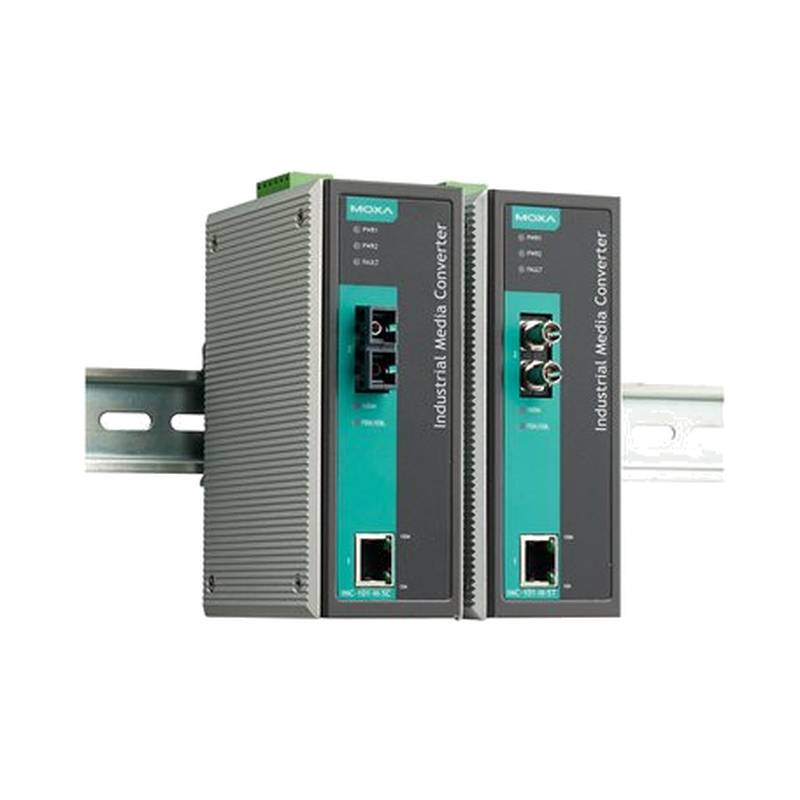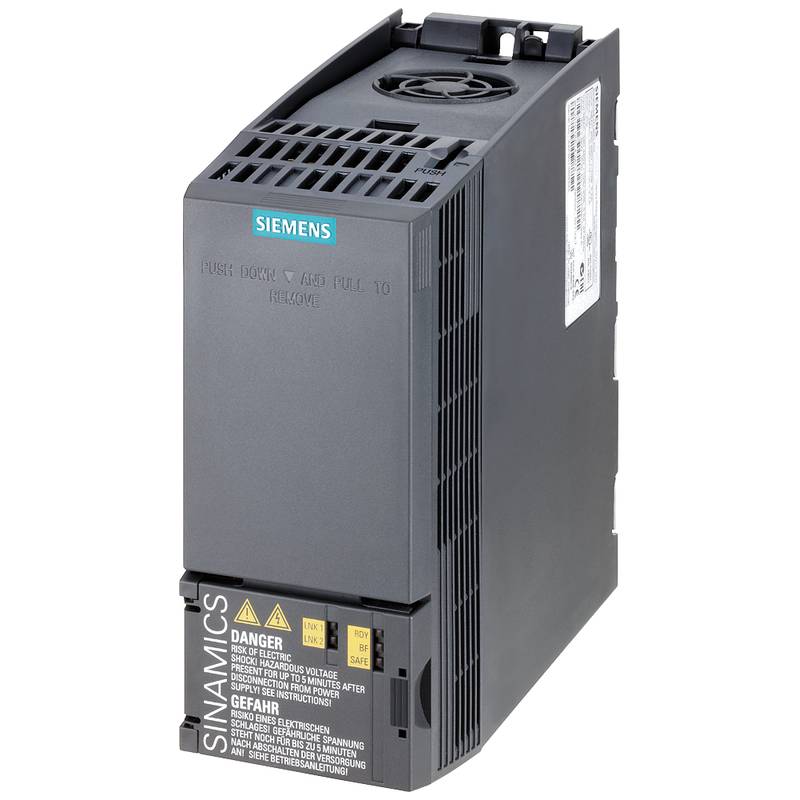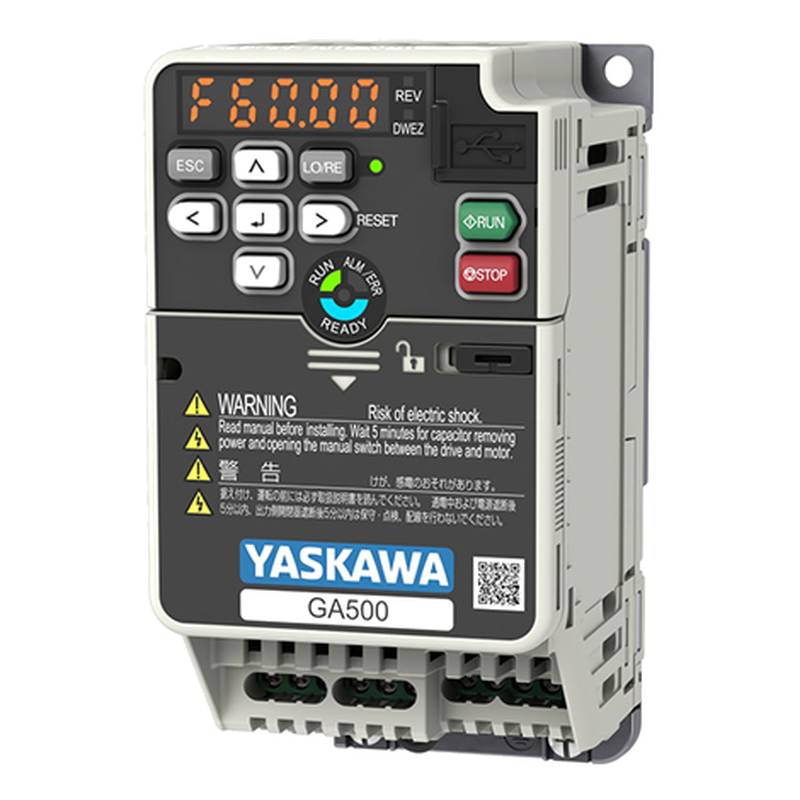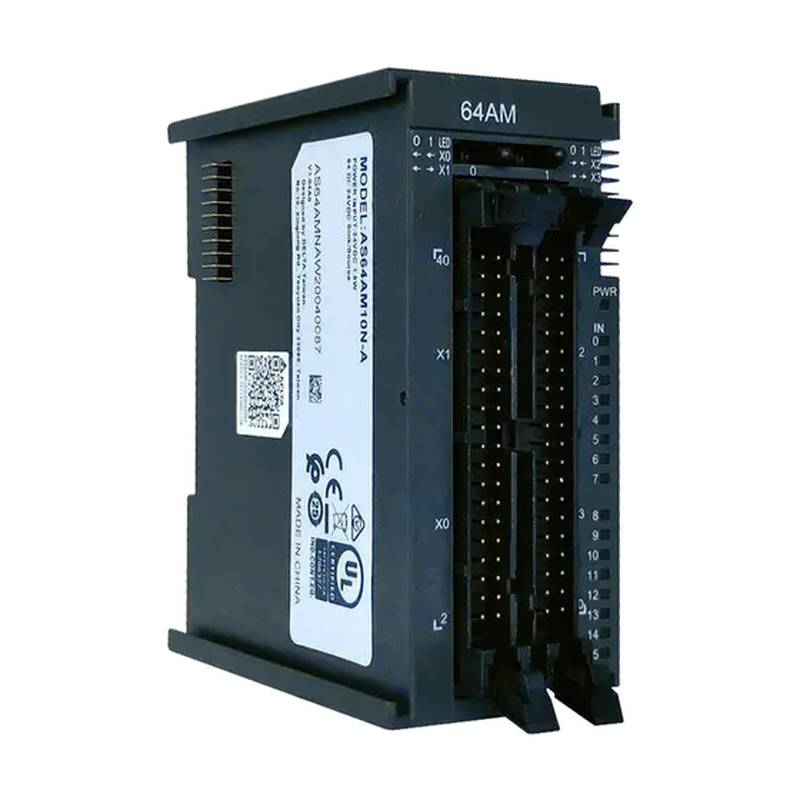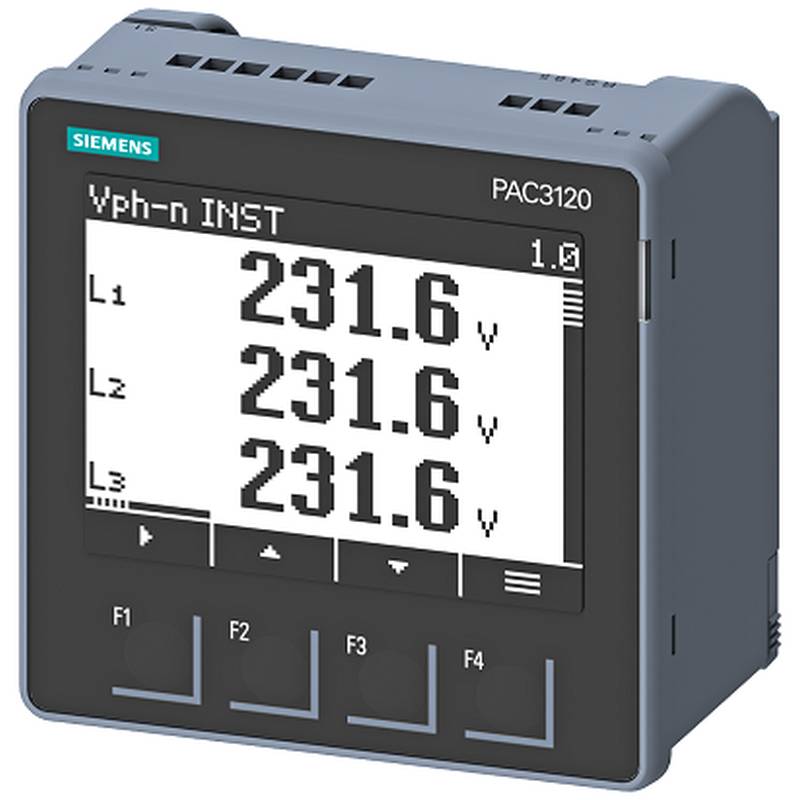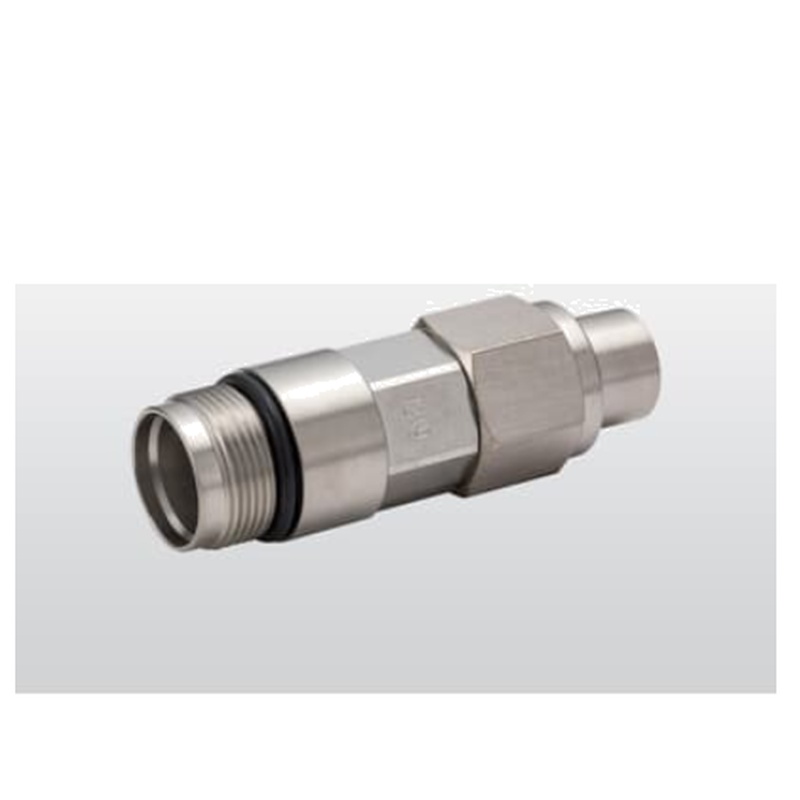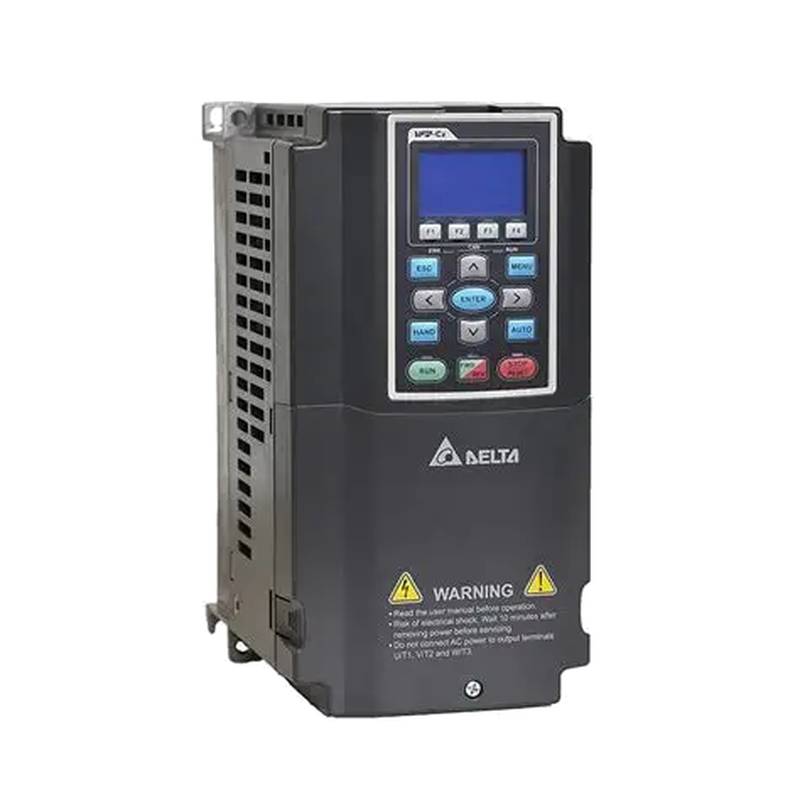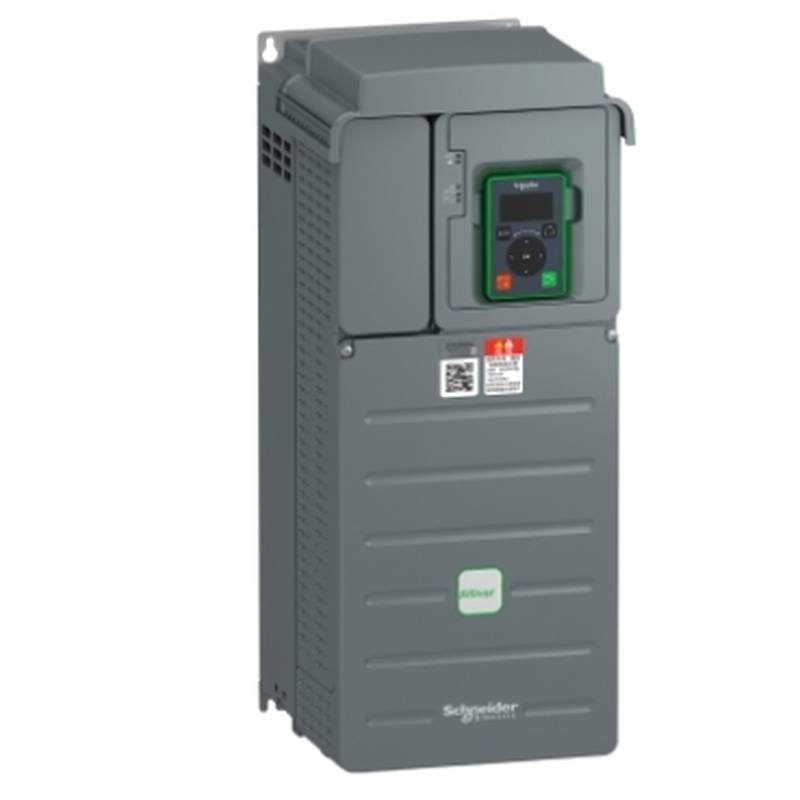
The Moxa IMC-101-S-SC is a robust 100 Mbps industrial media converter designed to bridge the gap between copper Ethernet and single-mode fiber optic networks. This essential device ensures reliable data transmission over extended distances, making it ideal for harsh industrial environments where electromagnetic interference and signal degradation are significant concerns. Its key advantages include enhanced network reliability, extended communication range, and robust industrial-grade construction. The core features encompass automatic MDI/MDI-X for easy connectivity, full-duplex flow control, and a wide operating temperature range. Key technical parameters include its 100 Mbps Ethernet speed, single-mode fiber support with an SC connector, and a compact, DIN-rail mountable form factor.
Product Specifications
| Feature | Specification |
| :---------------------- | :----------------------------------------------------- |
| Ethernet Port Speed | 100 Mbps |
| Fiber Port Type | Single-mode SC Connector |
| Fiber Wavelength | 1310 nm |
| Fiber Distance | Up to 30 km (18.6 miles) |
| Ethernet Interface | 10/100BaseT(X) Auto-negotiation |
| Fiber Interface | 100BaseFX |
| Flow Control | IEEE 802.3x flow control, backpressure |
| LED Indicators | Power, Link/Activity (per port) |
| Power Input | 12/24/48 VDC (9.6-60 VDC) |
| Power Consumption | Max. 2.1 W |
| Operating Temperature | -40 to 75°C (-40 to 167°F) |
| Dimensions | 31.5 x 104 x 85 mm (1.24 x 4.09 x 3.35 in) |
| Mounting | DIN-rail, wall mount |
| IP Rating | None specified (typical for industrial converters) |
| EMI Immunity | Meets EN 61000-4-5 standards |
Core Features & Market Positioning
The Moxa IMC-101-S-SC distinguishes itself in the industrial networking landscape through its uncompromising reliability and extended reach capabilities. Unlike standard commercial media converters, it is engineered to withstand extreme temperatures, vibrations, and electrical noise prevalent in sectors like manufacturing, transportation, and energy. Its ability to seamlessly convert 10/100BaseT(X) Ethernet to 100BaseFX single-mode fiber optics with an SC connector allows for data transmission up to 30 kilometers. This extended range is crucial for connecting disparate industrial control systems, remote substations, or surveillance equipment across large facilities or challenging terrains. The auto-negotiation and auto-MDI/MDI-X features simplify deployment by eliminating the need for specific crossover cables and automatically detecting the optimal port configuration.
Key Application Scenarios
The Moxa IMC-101-S-SC is pivotal in scenarios demanding robust, long-distance industrial communication. It excels in extending Ethernet networks to remote plant machinery or control rooms in manufacturing automation, ensuring real-time data acquisition and control. In transportation, it supports intelligent traffic systems and railway signaling by providing reliable network links across significant distances. For energy sector applications, it facilitates secure and stable communication for SCADA systems, substations, and pipeline monitoring where fiber optic immunity to electromagnetic interference is paramount. Furthermore, it is invaluable for connecting IP-based security cameras in large outdoor industrial sites or ports, overcoming the distance limitations of copper cabling.
Practical System Integration Guidance
Integrating the Moxa IMC-101-S-SC into an industrial network is straightforward, leveraging its plug-and-play nature. Connect your standard Ethernet device (e.g., PLC, industrial PC, switch) to the RJ45 port. Ensure the connected device is configured for 10/100 Mbps auto-negotiation or a fixed 100 Mbps setting. For the fiber optic side, use a single-mode patch cord with SC connectors to link the IMC-101-S-SC's fiber port to another media converter, a fiber switch, or a network interface card equipped with an SC single-mode port. Verify that both ends of the fiber link are correctly paired and terminated. Power is supplied via a wide-range DC input, supporting 12, 24, or 48 VDC, typically connected to an industrial power supply or a redundant power source for enhanced reliability.
Operation and Risk Mitigation
Operating the Moxa IMC-101-S-SC requires basic understanding of Ethernet and fiber optic principles. Ensure proper power supply within the specified voltage range (9.6-60 VDC) to prevent damage. When handling fiber optic cables, avoid sharp bends and protect the SC connector end-face from dust and scratches, as these can cause signal loss or connection failures. The device's robust design mitigates common industrial risks like electrical surges and interference, but it is advisable to ground the unit properly and install it within an appropriate enclosure if environmental conditions are exceptionally severe. Regular visual inspection of LED indicators for link status and power is a simple yet effective troubleshooting step.
Scalability & Long-Term Value
The Moxa IMC-101-S-SC offers significant long-term value through its inherent compatibility and potential for network expansion. As an industrial Ethernet-to-fiber converter, it seamlessly integrates into existing copper-based networks, enabling gradual fiber optic upgrades without requiring a complete overhaul. Its support for 100 Mbps ensures adequate bandwidth for many industrial control and monitoring applications. For networks requiring higher speeds or advanced features, Moxa offers a broad portfolio of managed industrial Ethernet switches and media converters that can coexist or be deployed as the network evolves. This flexibility positions the IMC-101-S-SC as a cost-effective solution for initial deployments and future-proofing industrial communication infrastructure.
Frequently Asked Questions
1. What is the maximum distance the Moxa IMC-101-S-SC can transmit data?
The Moxa IMC-101-S-SC supports single-mode fiber optic transmission.
It is designed to reliably send data up to 30 kilometers (approximately 18.6 miles).
This extended range is critical for connecting widely separated industrial locations.
2. Can the Moxa IMC-101-S-SC connect to standard Ethernet switches?
Yes, the device features a standard 10/100BaseT(X) RJ45 Ethernet port.
It auto-negotiates speeds and duplex modes with connected devices, including standard switches.
This makes it fully compatible with most industrial and commercial Ethernet networking equipment.
3. What type of fiber optic cable does the Moxa IMC-101-S-SC use?
This model specifically utilizes single-mode fiber optic cable.
It employs an SC connector type, which is a common and robust connector for fiber optics.
Ensure you use single-mode patch cords with SC connectors for proper connectivity.
4. Does the Moxa IMC-101-S-SC support PoE (Power over Ethernet)?
No, the Moxa IMC-101-S-SC does not natively support Power over Ethernet.
It requires a separate DC power input connection for operation.
Power can be supplied via a 12/24/48 VDC source, often from an industrial power supply.
5. Is the Moxa IMC-101-S-SC suitable for outdoor industrial environments?
Yes, it features an industrial-grade design and a wide operating temperature range.
It is built to withstand harsh conditions like extreme temperatures and electrical noise.
However, for direct outdoor exposure, an additional protective enclosure might be recommended.
6. How do I configure the Moxa IMC-101-S-SC?
The Moxa IMC-101-S-SC is largely plug-and-play with minimal configuration.
Its Ethernet port auto-negotiates speed and duplex settings automatically.
Basic setup involves connecting power, Ethernet, and fiber optic cables.
7. What is the power input requirement for the Moxa IMC-101-S-SC?
It accepts a wide DC voltage input range.
The specified input voltage is 9.6 to 60 VDC, typically accommodating 12, 24, or 48 VDC.
This flexibility aids integration into various industrial power systems.
8. What are the advantages of using single-mode fiber with this converter?
Single-mode fiber allows for much longer transmission distances compared to multimode.
It also offers higher bandwidth and immunity to electromagnetic interference.
This makes it ideal for extensive industrial networks and noisy environments.
9. Can I mix and match different types of fiber converters with this unit?
As long as the fiber type (single-mode) and connector (SC) match on the other end, it's possible.
The critical aspect is ensuring compatible optical signaling and data rates.
Always refer to the specifications of both devices for successful interconnection.
10. What troubleshooting steps can I take if the fiber link is not working?
First, check the LED indicators on both the IMC-101-S-SC and the connected fiber device.
Inspect the fiber optic patch cord for damage, proper seating at the SC connectors, and correct polarity.
Ensure the fiber optic ports on both ends are clean and free from dust or debris.














